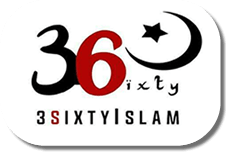CRITERIA OF AUTHENTICITY OF HADITH
The need for establishing the authenticity of hadith.
Unlike the Quran, the hadith was not documented during the Prophet’s lifetime. The Prophet is reported to have discouraged the writing of his sayings lest they might be confused with the text of the Quran. The Hadith were therefore passed on mainly orally before they were committed to writing and gathered into collections between one hundred and three hundred years after Hijrah. Obviously, when words are not recorded in writing at once there is a possibility of errors in their transmission. Firstly, the human memory is fallible. A saying might be partly forgotten or the meaning changed by mistake. Secondly, there is a possibility of forgery. An unscrupulous person holding a different view may invent or change the Prophet’s saying on purpose in order to support his personal interest.
Criteria for authenticity.
Muslim scholars like Imam Bukhari and Imam Muslim were aware that errors and inventions had occurred in the recording and transmission of earlier scriptures such as the bible. Therefore, they established procedures for determining whether or not a Hadith was genuine by setting up a criteria which included the following:
Was the Isnad(chain of transmitters) good?
Was the person who reported to have heard the hadith from the Prophet actually a contemporary of the Prophet?
Had the other persons named in the Isnad actually met each other and had the opportunity to transmit the hadith?
Were all those mentioned in the isnad truthful and of good memories?
Was a hadith transmitted by only one chain of transmitters of had it been heard and related by more than one route? A hadith heard by several companions and passed on by several different chains of transmitters was more likely to be authentic. If the hadith reported an event which occurred with may witnesses, it was essential that it should have been originally reported by many of them not just one. Meaning, not only one person could have heard it.
Was the matn(text) good?
If the matn of a hadith was contrary to the text of the Quran or the basic principles of islam, it should be rejected as unauthentic.
It was on this basis of this criteria that the famous collectors accepted or rejected the hadith they heard. It ws reported that Bukhari accepted only 7397 of the Hadith he examined and rejected over 600,000.
The science of hadith.
The above principles of evaluating a reported hadith constituted a scientific method of determining authenticity. Even within the category of accepted hadith the collectors sorted them into degrees of reliability. These categories are:
- Sahih: these hadith are considered sound or genuine traditions in accordance with all the above tests applied positive.
- Hassan: these hadith are considered good although not to the degree of sahih.
- Da’if: these hadith are considered weak and less reliable.
The arrangement of hadith into collections.
In the earliest collections, hadith were arranged into a form known as musnad( in accordance with their isnad). The hadith could be identified according to the companion of the Prophet who first related it. For example, Abu Huraira(RA), Aisha(RA) or Ibn Abbas(RA). Later collections abandoned this arrangement in favour of one that was more adapted to practical use, particularly by jurists and others who wanted to locate the Hadith easily to determine whether a particular practice was or was not lawful in Islam. The Hadith was then sorted into the subject matter of the matn(text), under sections such as nikkah(marriage), inheritance, solah(prayer), sawm and Ramadan(fasting), honesty, sabr(patience and perseverance) etc.
The importance of authentic collections.
The importance of establishing the authenticity of religious teachings cannot be overstressed. The early Muslim scholars were fully aware of this need in view of the warnings given in the Quran about followers of other religions who had mixed true religious teachings with their own human ideas and inventions which they attributed to God. Since the hadith was accepted as the second source of shari’ah(islamic teachings and principles), it was of vital importance to filter the true from the false hadith. The great collectors of hadith therefore performed a priceless service to Islam in undertaking the collection and scientific evaluation of all the supported hadith which were in circulation in the first centuries of Islam. The enormous number of rejected hadith is an indication of the strictness with which the collectors applied the criteria for authenticity.

